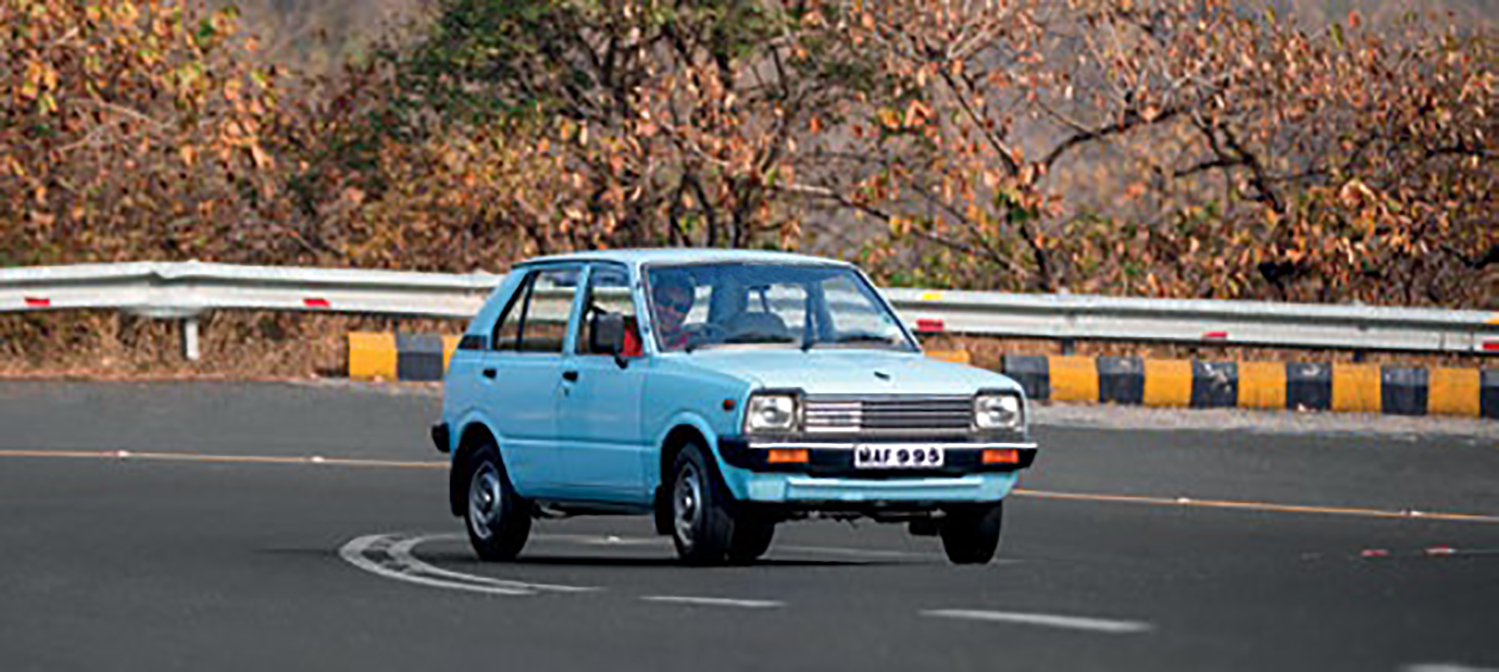37 years of the Maruti 800: Looking back upon the icon
It was on this day in 1983 that India's own 'people's car' became a reality
 The ed can't help but smile with the small wonder
The ed can't help but smile with the small wonderThe roadscape of almost four decades ago was an unimaginable time. Cars were, first of all, a luxury. And despite that, there weren't too many to choose from, as it was mostly a tie-up between the Hindustan Ambassador, and the Premier Padmini (nee Fiat 1100). Now, though a few well-heeled (and well-connected) individuals would import the odd Ford, Toyota or Mercedes-Benz, the very idea of a car was an aspirational one for the majority of the populace. So when Prime Minister Indira Gandhi launched the first Maruti 800 on December 14, 1983, it was a pivotal moment. Not only did the masses finally have a worthy competitor to the Amby and Padmini, the Japanese engineering (the Maruti 800's underpinnings were that of the Suzuki SS80) were infinitely more reliable.
At a glance
The first Maruti 800 may have been smaller, shorter, narrower and consequently had less passenger space when compared to its competitors, but what it lost in sheer space, it more than made up for in practicality. The rear windshield doubled up as a hatch for the boot, while the jack (the one to lift the car) was tucked away in a corner of the hood. Additionally, being a front-wheel-drive car, the lack of a central transmission tunnel may have liberated just that miniscule amount of space to seat four comfortably.
From the driver's seat, the view was sparse. The left half of the cluster had a speedo, its readout going all the way to 140kmph, while the right half was bifurcated for the fuel gauge and engine temperature gauge. There were also tell-tale lights: indicators, low oil warning light, low battery light... and that's it. The centre console had a slider for the AC, along with a cassette player and nothing else. No power steering. Roll-up windows. Simple.
On the go
Despite its measly (by today's standards) 39bhp power figure from the 796cc triple, the four-speed '800 was great fun to drive. This is because not only was its kerb weight just shy of 600kg - or around half that of the Ambassador - it also made 2bhp more. This, combined with the diminutive proportions, monocoque chassis (!) and low-slung stance made it a proper fun-to-drive car. All this for the princely sum of Rs 47,500.
Now, though I won't get into the 0-100kmph figures, it is worth mentioning that the 800 topped out at 120kmph. But what's more important is, as the Ed says, "It didn't wheeze and cough its way up there, and you could have a conversation in the car at over 100kmph. It went where you pointed it. It gripped and held on gamely at speeds unimaginable in the cars of the day."
Oh, and in case of an errant pedestrian, or cattle (almost a common fixture of that bygone era) popping out, the disc brakes up front actually did their job, reigning in progress albeit with a complimentary squealing soundtrack.
And as expected, all the fun didn't need deep pockets to accommodate, as the 800 was good for 25.95km to every litre of petrol (sans AC, of course).
The 'original' Maruti 800 has gone through multiple changes and iterations. It got an AC barely six months into its initial production run, and within its near three-decade reign, spawned the Zen and the Alto. It was the first car owned by an entire generation on Indians, and put many many more on wheels. A ubiquitous sight on Indian roads despite being taken off the showroom floors more than half and decade ago and even after facing competition from newer and cheaper cars, the Maruti 800 was, is, and will always be the quintessential 'people's car.'


